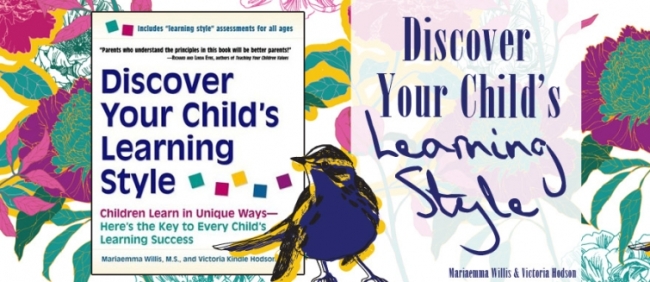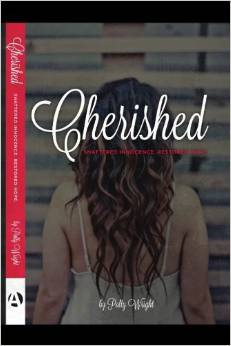On my show I had the pleasure of speaking to Mariaemma Willis of the Learning Success Institute. As a homeschooler I had always been interested in the different ways my children learned. Out of the four, not one of them had the same learning style that I did. For me studying from a book or taking notes at a lecture and then transcribing all I had gleaned for quick and easy reference later was perfect; then I would also discuss and share my knowledge with others either in conversation or lecture classroom format, I was a classic producer. I do well in structured classroom settings, love to read and research, am happy at a keyboard, follow and design schedules and am told I am a good manager. Imagine my dismay when not one of my children shared my love of books, writing, the library, and quiet study. My four children and husband, fall into the performing, inventing, thinking, creative, relating and inspiring categories as do about 80% of the population, women and children included!
The longer I spent with my wild and rambunctious family the more they brought out the creative soul in me, I am sorry to report that I really did not bring out the quiet studious side of any of them and so I have reached the conclusion that only about 10-20% of the people who inhabit the world enjoy learning the way I do and are successful in an institutionalized school system. The other 80% are probably prime suspects for ADD or other serious learning disorders because they cannot learn by sitting in a chair all day memorizing history facts or wrestling with complicated scientific theories and are consequently failures in the classrooms.
I raised the question with Mariaemma that if the majority of the world are tactile, visual, interactive, relating kind of learners then why do our classrooms sit children in rows, keep them quiet while teachers lecture or read from books and then test them in writing which they may or may not have mastered yet? Why do the classrooms and lecture halls in our schools and colleges, cater to the 3-5 children per classroom who are producers and stick learning disorder labels on the 15-20 who disrupt the classroom because they cannot pay attention, focus or sit still for long periods of time?
I reasoned that if the classrooms were set up for the hands on types who love to go out, use their bodies, move around, perform, spend time in their minds (which looks a lot like daydreaming), then the studious types would adapt and find ways to schedule their time, focus on their activities and turn in their work without causing a disturbance because the rest of the classroom would already be in an uproar resembling my living room on any given day while our homeschool was in session.
The answer? Most teachers and administrators who set up classrooms and curricula are the Producer Types. The teaching profession attracts organized, studious types who probably don’t feel comfortable thinking outside the box because it is too experimental and may spiral out of control, which is fun for a performer but a nightmare for a producer.
The Montessori classroom is the closest model to a classroom that caters to all learning types, there is movement, freedom to choose work, a sense of order and timetables to follow. There are places to be quiet and rest, places to make noise, areas to nurture gardens, pets and people, there are activities that require intense focus or not depending on how the child feels that day. My oldest son thrived in this kind of environment and only got into trouble when he had to sit in a circle for too long and listen to a story. He could listen to a story for a long time as long as he was able to do something else, but if he did not have an appropriate activity to keep his hands or feet occupied he would nudge, pinch and step on his friends until he was caught and put in time out, another restrictive area that contributed to his label of ADD. In his doctor’s defense he was very aware of the fine line we trod between normal five year old behaviour and deliberate, disruptive behaviour. After a couple of years of exasperated teachers and a frustrated and disillusioned child, I decided to homeschool.
Fellow homeschoolers we are so lucky to be able to modify our instruction to suit our children, the trick is finding out the best way our children want to learn. Mariaemma Willis has a profile on line that you can access to discover not only what your children’s learning styles are but also what yours is. Go onto her website at www.learningsuccessprofile.com and take the test.
There are five aspects that make up a learning style, they are, talents, interests, modality, environment and disposition.
By closely observing our children we can tap into their talents and interests and aim to incorporate what they are good at into their training. How do they learn best, indoors, outside, in the quiet, a cool place, the water or while they are actively doing something? One of my sons recited his math facts daily while honing his two wheel bike skills, another would spell words for me while he shot basketball hoops. My youngest boy read later than the others because the outdoors beckoned even on the coldest days and he could not waste his precious time inside learning how to read, when I could read to him while he climbed trees and explored the nearby field for snakes and raccoons.
My youngest daughter learns quickly because she hates not knowing how to do something. Last year at college she actually discovered this about herself: while performing with The Collin College Dance Ensemble where she loves to perform and is good at it, she dreads the thought of having to go through the process of learning a dozen new pieces each year. Armed with this newly discovered insight she started her first job at Starbuck’s and became the fastest learner they had ever trained! No long drawn out projects for her, she is quick, observant and has an incredible memory.
As homeschoolers we can also observe how our children best enjoy learning, are they auditory? Although mine loved to hear me read aloud to them, they had to be engaged in something else while they were listening. We loved talking about topics, questioning, drawing, and writing, all in moderation though. By using a variety of techniques we were able to get through our work in a way that was satisfactory for all of us and left something to show for the hard work. We hung framed pictures, laminated poetry and made books which utilised numerous talents and kept them actively participating instead of languidly vegetating!
As parents we are experts on our children’s disposition, I have two high performers, my oldest son has a mathematically scientific brain that thrives while he is engaged in the editing process that is part of his job as a film maker. He can remember frames he wants to cut, can see the scene in his head and remember where he has stashed spliced pieces of digital data; he combines his creative side with his logical reasoning and turns out high quality work. He is also able to watch a movie, listen to music and text while he is editing because I am sure he has been blessed with several brains in one head. As a child I told him he was brilliant and he has taken my word for it!
My other performer is my youngest daughter, she has to be the centre of the stage at all times but it comes at a price. She needs hours of quiet time, to watch a film, and more often to nap and re-charge, being “on” all the time wears even this most stalwart individual out!
My middle son whose disposition is to relate, inspire and invent went on to tackle science so that he could work with animals outside and not be stuck at a desk inside. The only time he had to do that was at college and he rushed through it in record time graduating at just 21. As a child his girl siblings loved to play with him, he invented new games for the day and conned them into doing things like making his bed for him while he sat and kept them company, just sharing his spotlight was enough for his adoring sisters.
I was a producer but I had all the other learning styles going on in my house and true to form I was able to adapt. We all have a predominant learning style with other aspects sprinkled in here and there. We can modify at home according to our children and if we look at the numbers in the public and private school classrooms only about 10-20% in any classroom get all the A’s, at least 60% of the population are picture and hands on learners and at least 80% of the adult population doubt their own abilities for success because of the learning messages they received while they were at school. No wonder so many children appear to fail at school or at least not reach their full potential.
Let’s celebrate the fact that, as homeschoolers, we can modify our education methods to suit our children’s learning styles; let’s acknowledge that most of us do not learn well in a formal classroom setting and allow our creative genius to shine forth to the betterment of our children’s future.







 Hello I'm Vivienne McNeny, English to the core and I've just put the kettle on so while its boiling let me tell you a little about myself. I was raised in a convent boarding school while my parents diplomatically hosted cocktail parties at foreign Embassies.
Hello I'm Vivienne McNeny, English to the core and I've just put the kettle on so while its boiling let me tell you a little about myself. I was raised in a convent boarding school while my parents diplomatically hosted cocktail parties at foreign Embassies. 







No comments so far!
Leave a Comment